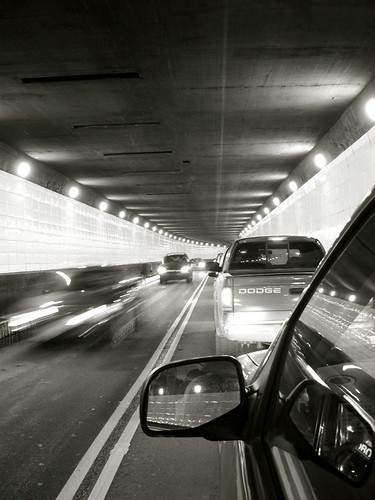The Detroit–Windsor Tunnel is a partially submerged highway tunnel connecting Detroit, Michigan in the United States, with Windsor, Ontario in Canada. It was completed in 1930.
It is the second busiest crossing between the United States and Canada after the nearby Ambassador Bridge. About 13,000 vehicles use the tunnel each day.[1] The structure is jointly owned by the two cities. A 2004 Border Transportation Partnership study showed that 150,000 jobs in the region and $13 billion (U.S.) in annual production depend on the Windsor-Detroit international border crossing.[2]
When constructed, it was only the third underwater vehicular tunnel constructed in the United States (after the Holland Tunnel between Jersey City, New Jersey, and downtown Manhattan, New York City, New York and the Posey Tube between Oakland and Alameda, California).
Its creation was prompted by the opening of cross-border rail freight tunnels including the St. Clair Tunnel between Port Huron, Michigan and Sarnia, Ontario and the Michigan Central Railway Tunnel between Detroit and Windsor.
The Detroit–Windsor Tunnel is 120 feet (37 m) short of a mile at 5,160 feet (1,573 m). At its lowest point, the two-lane roadway is 75 feet (23 m) below the river surface.
The cities of Detroit and Windsor hold the distinction of jointly creating both the second and third underwater tunnels between two nations in the world. The Detroit–Windsor Tunnel is the world’s third underwater tunnel between two nations, and the first international underwater vehicle tunnel. The Michigan Central Railway Tunnel, completed in 1910 also across the Detroit River, was the second tunnel between two nations. The St. Clair Tunnel, completed in 1891 between Port Huron, Michigan and Sarnia, Ontario was the first.


